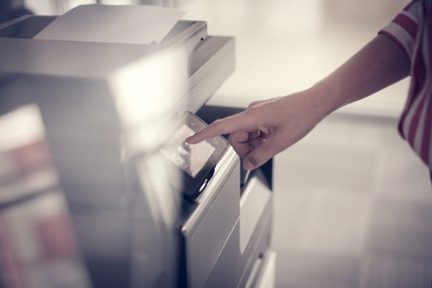
In many offices, every operating cost is identified, analyzed, and optimized to keep the business as efficient as possible. Yet, print related costs are often overlooked in this refining process. On the surface, these costs seem simple — your office needs to print, copy, and scan, and you’ve got all the necessary equipment, so what else is there to consider? Well, consider that the average office employee prints 17 pages a day, and that according to the Gartner Group, 90% of companies don’t know how many printers they have or what they actually spend on printing. If you aren’t paying attention, you may be wasting money.
Fortunately, there are a number of methods to lower your print-related costs and ensure that they stay low. A comprehensive approach is available through EON’s Managed Print Services, but here are a few tips from our experts.
Consolidate and Upgrade your Equipment
Cheap, personal printers are inefficient. The cost of toner and electricity for these machines is generally far more than larger, multi-function printers. Though the commercial equipment may be more costly upfront, the long-term savings on ink and utility bills make it worth the investment.
Utilize Cost-Efficient Printer Settings
With fewer machines, you can choose defaults in the printer’s settings that will prevent employees from unwittingly using more ink or electricity than the job requires. But even if you use a fleet of personal printers, setting each machine to these defaults will cut costs:
Print in black-and-white — Color requires four different toners to create an image, while black-and-white uses just one cartridge. Color also takes longer, pulling more electricity. Unless it’s absolutely necessary, print in black-and-white ink.
Print in “low-quality” and “grayscale” — These options ensure that no color is mistakenly being used. Even if you’re printing in black-and-white, some printers use a mix of color to make “high-quality” blacks. On the page, the difference between “low-quality” and “high-quality” is negligible, particularly if the documents are for internal company use only.
Print double-sided — Simply put,this saves paper. Considering that many documents end up shredded or in the recycle bin anyway, printing double-sided can reduce your paper cost and help preserve the environment.
Implement an Office-Wide Print Policy
Defining a policy for printing practices will give employees the knowledge to do their part. Beyond default printer settings, changes to document settings in whichever text processor is used can cut costs:
Use ink-friendly fonts with reduced font sizes — Not all fonts are created equally. Some use less ink than others, so switch over from Arial. Further, reduce the font to a size only as large as you need for any given project. These may seem like tiny savings, but a dollar is a dollar.
Reduce margin size — Many word processors automatically set side margins at 1.5 inches. Dive into the document settings and reduce this to 1 inch. You’ll barely notice a difference, but you’ll save paper, particularly on longer documents.
Print multiple pages per sheet — When feasible, print 2-4 pages per side of each sheet. This can dramatically reduce how much paper you use.
Take Advantage of Managed Print Services
Professional analysis of your current printing use and actual printing needs, combined with expert knowledge of the most efficient equipment for these needs can save the valuable time you’d spend working through the many print-related considerations. From reducing the workload of your IT department to automated shipment of toner when machines are running low, Managed Print Services offer a comprehensive approach toward keeping print costs low.
EON is happy to provide these services, along with any equipment you may need to optimize your office. Contact us today.



